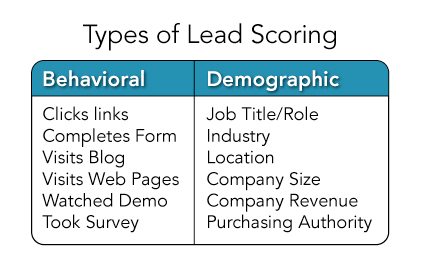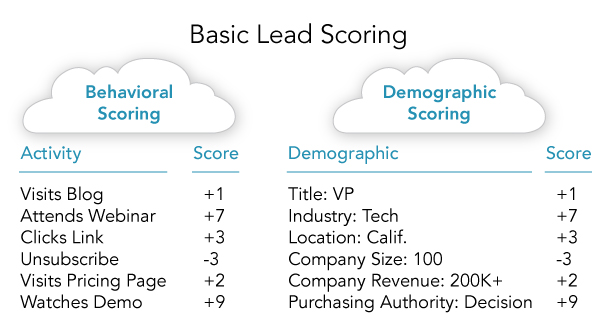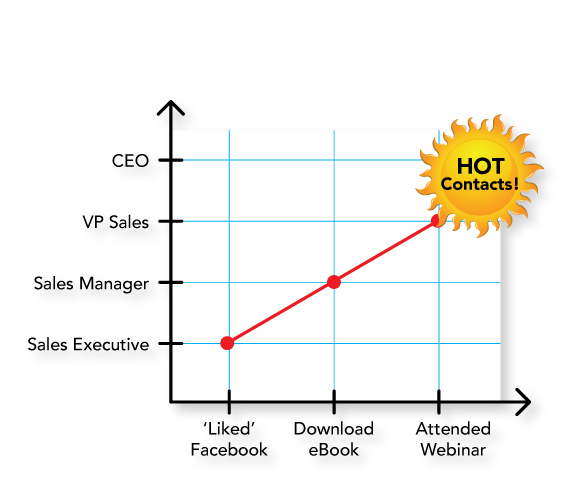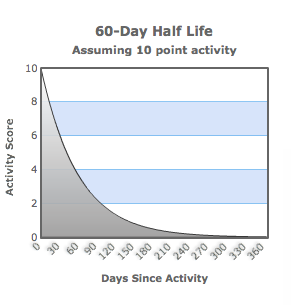GreenRope Blog
Title search: ✖
|
Show All (637)
#CoolerChat (7) All About GreenRope (172) Content Marketing (66) CRM (191) Customer Experience (79) Digital Transformation (8) Email Marketing (6) Event Recaps (2) Everything Small Business (46) How-To (136) In the Clearing with Lars (25) Infographics (4) Marketing (149) Marketing Automation (60) Monthly Updates (26) Press Release (1) Sales (76) SMB (140) Social Media (20) Tidbits for You (116) Websites & SEO (4) Weekly Roundup (16)
10 Surprising Things You Didn't know about Client Services & Search Marketing Manager, Lisa Frampton
Disqualifying Leads Without Alienating Them as Future Customers - Part 2: Cultivating Non-Leads with Automated Marketing
4 Ways to Get Your Email Marketing in Front of the Right Audience Through Personalization & Segmentation
Total Cost of Ownership: What does it mean and how can you avoid costly, unsuccessful implementations.
|
The Art of Scoring LeadsAccording to a study done by Aberdeen Research, companies that implement a proper lead scoring strategy have a 192% higher average lead qualification than those that do not. So, what does this mean? This means, your business can be more competitive, save money, increase revenue, and overall growth by implementing lad scoring. Having the ability to determine which leads are most qualified to buy, means that you can spend less time running around in circles chasing lower quality sales, and more time focused on those that are likely to convert. Lead scoring is a way of measuring the level of interest among your many prospects. Once you are able to assess where your opportunities and leads are in the sales funnel, you can more efficiently devise and implement a nurturing strategy to move them to the next stage in that funnel. Lead scoring tools, such as GreenRope’s, sorts through all your contacts’ activities, (such as webpages visited, webinars attended, eBooks downloaded, as well as demographics) and ranks them in terms of how ‘ready to purchase or convert’ they are. The data used in lead scoring is both demographic and behavioral; you will have a detailed picture of what your prospect looks like and what actions they are taking to show interest in your product or service. Access to this data enables the user to align the most appropriate follow-up, as well as helps both sales and marketing professionals pinpoint where each contact is in the buying process.
Remember our blog post, “The Growing Relationship between Marketing and Sales”? Well, this is where lead scoring is most necessary. Lead scoring encourages collaboration between the two departments, as both are on the same page when it comes to what constitutes a qualified lead, as well as opens the discussion for the type and quality of leads that are coming from a company’s marketing efforts. Going along with this idea of ‘lead quality’, lead scoring helps ensure that the most qualified leads are being followed up, versus a lead that is nowhere close to converting. Salespeople save time, making them effective at closing the right prospects in less time. All-in-all, lead scoring bridges the gap between sales and marketing, while increasing efficiency and sales effectiveness. Revenues become more predictable, as a business is better able to distinguish which contacts are most likely to move smoothly down the pipeline. Naturally, in order to accomplish lead scoring, your business must have a system in place that can accurately track and score your leads. You want software that scores your leads for you, so that you can do more with less. I.e. you do not have to sit there and randomly cold call a list of people who recently visited your website. Instead, use the information collected from your tracking, CRM, etc to follow up with the leads that have expressed genuine interest in your product. We all want the most bang for our buck possible, and lead scoring is the way to do it. Saving both time and money, sales professionals are able to distinguish between the junk pile and the money pile. Once you have made the right decision to implement lead scoring into your organization, it is time for both the sales and marketing departments to sit down and determine a lead scoring scale. This means, defining what number or score is allotted to each behavior or demographic. Essentially, you are ranking actions, company titles, interactions, etc from highest to lowest. The higher the number, the better the lead. Simply put, you want to know whether your lead is a decision maker, and whether they are showing the right level of interest to warrant a follow up. For example, a good fit for a follow up, and someone that would receive a higher score in the demographic category, might be a VP of Marketing, CMO, VP of Sales, or CEO. You know that this person has the power to make a decision, and therefore receives a higher score, automatically making them a more qualified lead. This brings up a critical piece of the lead scoring puzzle, gathering the demographic data in the first place. Data gets into the CRM in a number of different ways. Data can be entered manually or directly imported from another system. It may also be collected from signup forms (lead capture forms/ landing pages), profile updates via your email marketing, or data aggregator software like Rapleaf. Each piece of contact information is added separately, and can be attributed to either static data or custom user-defined data fields, which, if using GreenRope, is done in Group Settings. Demographic fields include industry, job title, department of the company the contact works in, company size, location, etc. If you are a San Diego based company looking for San Diego clients, a lead based in San Diego with a job title of Director is shaping up to be a good lead. Assign points individually to every criterion, so that you are able to get the most well rounded picture of your contact. Remember, you can use both positive and negative values, which may come in handy if you want to reduce scores for employees or people who you know will never be leads.
Now, if the VP of Marketing simply looked at your company’s Features page, and nothing else, then they might not be showing the type of interest that is necessary to receive a follow up call or email. This leads us to activities and opportunities scoring. The activities, such as those listed below, contribute to scoring a contact for the actions they are taking when they interact with your company. Did the contact engage with you socially? Did they download an eBook or attend a webinar? Maybe they forwarded your newsletter onto a colleague. These actions each receive their own score and determine how interested they are in learning more about your product or service. Due to the fact that most buyers look to the Internet to gather information about products and services they are interested in, it is crucial for sales professionals to be able to track this “online body language.” Just as if you were speaking to a lead in person, it is critical to pay attention to their actions, so that you get a good idea of where they stand. If you are using the GreenRope platform for your lead scoring, the Hot Contacts feature (found in Contacts > Hot) is useful for tracking people who have shown recent interest in your company. ‘Hot Contacts’ are those who have taken significant action on emails you have sent as well as people who have visited your website. Contacts are scored based on email tracking points, and visits to your website, which are allocated by the ranking you assigned to your pages in the Website > Tracking area.
The chart on the right-hand side of the page pinpoints the contacts with the highest score for both demographics and activities. Those closest to the upper right hand corner are ‘Hot’ contacts, or leads most likely to convert. Another important field/factor, which GreenRope offers, is the Activity Half-Life field (pictured below). This determines how rapidly a contact’s activity score diminishes over time. This way, you can make actions that happened more recently, rank higher. GreenRope uses a radioactive decay model, meaning that a contact’s ‘half-life’, or their score will be roughly half of what it was the it happened after the a pre-determined set amount of days has passed. This number depends on how long your sales cycle typically is. Most organization use 30, 60, or 90 days as a baseline, Ever heard the saying, ‘when you’re hot, you’re hot?” Just like your scrambled eggs, don’t let your leads get cold.
Once all of this data has been collected, your lead receives a score, just like a student receives a grade. This score is going to tell the user whether this lead is qualified or not. A qualified lead gets an appropriate follow up and the right nurturing, where as an unqualified lead will not. For example, a qualified lead may receive a phone call or perhaps a “Why Now” promotion, whereas a lead that may not be the right contact, but seems very interested, should continue to be monitored for future activities, just in case. If someone is just simply the wrong fit and not interested, you simply fulfill their requests and filter them out. For more information about lead scoring, stay tuned for GreenRope’s upcoming Guide to Lead Scoring. |



